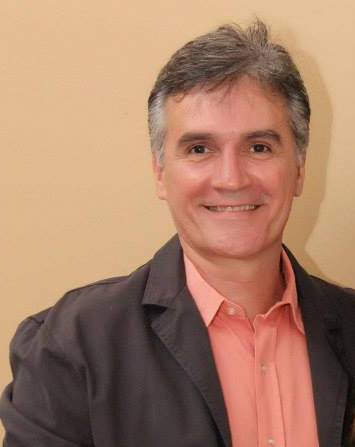“Close Encounters of the Third Kind”* – Part I
Or “When Pre-Teens First Meet the Dreaded Older Male Teacher”
Based on a true story.
When I thought about writing this post, thinking back to the time when I first started teaching was unavoidable. I was quite young, in my early 20’s, when I was asked to teach some groups of children whose ages ranged from 8 to 12 years old. What an experience that was! I had enough energy to keep up with their franctic pace and made sure my lessons were filled with a variety of short activities that required focus and attention during a very little time span. I was also quite good at playing the guitar and had a considerably extensive repertoire of songs to play and sing with my students. They loved that and so did I.
It has been 30 years since then.
At the beginning of this year’s second school term, I reluctantly accepted to teach a group of Junior Pre-Intermediate students. I should say at this point that teaching learners at this level has never been an issue for me. However, in this very specific situation, what scared me a bit (too much) was the word Junior, placed immediately before the A2/B1 level. It implied teaching kids entering and/or just about to enter adolescence, a somewhat difficult phase (to say the least) in human development.
I was not comfortable with the idea of having to work with a group of kids who were too used to having a lovely female teacher teach them throughout their entire path since their joining the school at a much lower age. Just for the record, I am currently the only male teacher at the institution I work for – have been, actually, for a number of years now. Whenever the so-called ‘difficult’ students did something that collided with the school’s policies and/or rules (late homework, disruptive behavior etc), they were often told that they would eventually “end up” in my hands and that I would ‘put them back on the right track’.
That’s how I acquired the somewhat unfavorable reputation of the ‘teacher to be avoided…’
Not really…
Here’s a brief account of what happened:
Day 1
First attempt: B C# A A8 E
I’m the five-note ostinato trying to establish an initial friendly contact with the kids: “So guys, are you all happy to be back for another term? I’m very happy to have you! (grin). At first, no response. They were too scared to even look into my eyes. I pretended not to be scared either (though my dry mouth kept telling me the opposite). I must admit that my question was not exactly a suitable one. By and large, especially at this age, students are never happy to be back to school! After waiting for a few seconds I learned that my attempt to establish some sort of eye contact had met with complete failure i.e., whenever mine and a student’s gaze met, they immediately disconnected by looking away. The walls and the floor were their favorite spots to hide from my (according to them, I later found out), scary look. A long minute had elapsed since my first question, so I decided that it was time for me to try something else… Contrary to what I have said in a previous post, this time, rather than being a welcome intermission between a speaker’s utterance and their interlocutor’s response, silence floated threateningly above our heads, like anvil-shaped cumulonimbus.https://bit.ly/cmlnbus
Trying to avoid an unsuccessful first encounter, I realized I had to start using some of the first-day activities I had prepared for the students. There are tons of those in the so-called classroom resources books. On my desk were a stack of handouts, envelopes with numbers and letters and words and color-coded prompt cards, in addition to two short video activities ready to go. I was about to decide which one I was going to use first when I was struck by a disturbing thought: – I know these activities will help break the ice more easily, but shouldn’t I try to make these kids feel more at ease before I start firing out instructions about what to do? What about rapport, care, trust and friendship?
I then remembered the KISS theory, which I’d learned during a training course I attended (not sure if as a trainee or trainer – it’s been a while, you know…). In case you don’t know, the acronym stands for Keep It Simple, Stupid. Following is what I did. Please keep in mind that I am not at all trying to reinvent the wheel, especially because I was first introduced to the activity I describe below in the early 90’s! It’s a classic, called cumulative introductions.
My idea was to introduce myself in a slightly unusual way, both by telling them a bit about myself and having them guess some things. My focus was to tell them how I got my name and find out how they got theirs. I then told them I needed to learn their names, which was a hard task since that was the first time we met. I also told them I was going to learn their names in that very class, and that I would never ever forget them. Below is a rough account of our conversation:
T: – Do you know how old your parents are? Your mom? Your dad? (All the students nodded.)
– Do you know what year your parents were born in?
They looked a bit puzzled, so I said,
– Open the calculator app on your cell phones and find out.
They all seemed to have enjoyed this quite a lot as they promptly took out their devices and started working out their parents’ years of birth. After a while, I asked them to tell me what they had found out. Since the students are roughly the same age, I got a lot of fathers in their mid 1970’s. My next question was:
– So guys, what year do you think I was born in?
To my surprise (and delight), most of them said late 1970’s, which made me just a little older than their dads.
– Well, I am 53 years old. What year was I born in?
(They were a bit shocked, but they readily gave me the answer: 1963. Then I asked them why they thought I looked younger. There was some silence; but then one of them said – “You have a lot of hair!”) And we all had a good laugh!
Initial contact definitely established!
– Yes, I am 53 years old and my name is Edmilson. My father named me after a famous soccer player from the 60’s who played for Fluminense, the team he supported. His name was” Edmilson Piromba!” (More laughter)
We were sitting in a circle, so I turned to the student sitting on my left and said, “Can you introduce me to your classmates?” Naturally, he made some changes in the structure, but he repeated the key information about my name.
When he finished, I told him to tell us the story of his own name. I said, “ – It’s okay if you don’t know much… Think of the meaning of your name, who chose it (Your mom? Your dad? Someone else? Why?)
Here’s what he said:
– My name is Pedro. I was born in 2003. I am 13 years old. My father “choose” my name. It means rock. I’m strong.
I said, – Your father chose a great name for you, Pedro! Then, turning to the student who was sitting on Pedro’s left, I said,
– Can you please introduce me and Pedro again, and then introduce yourself?
It was then that the students who were sitting close to my right side realized they had the toughest task of remembering and re-telling all the stories that had been previously been told. Once again, we all had another great laugh! Communication was taking place!
At the end, I re-told the stories of everyone’s names, thanked them and said I’d never ever forget their names again.
I must admit that I sometimes forgot some of their names…But I will never forget how successful this activity was in helping terrestrials and aliens (ie students and older teachers) establish “Close Encounters of the Third Kind” bit.ly/clsencthirdkind
My next post will hopefully describe how I was able to establish somewhat strict behavioral rules and deadline-meeting requirements without compromising the friendly and caring classroom atmosphere.
* a 1977 American science fiction film, written and directed by Steven Spielberg. https://en.wikipedia.org/wiki/Close_Encounters_of_the_Third_Kind





